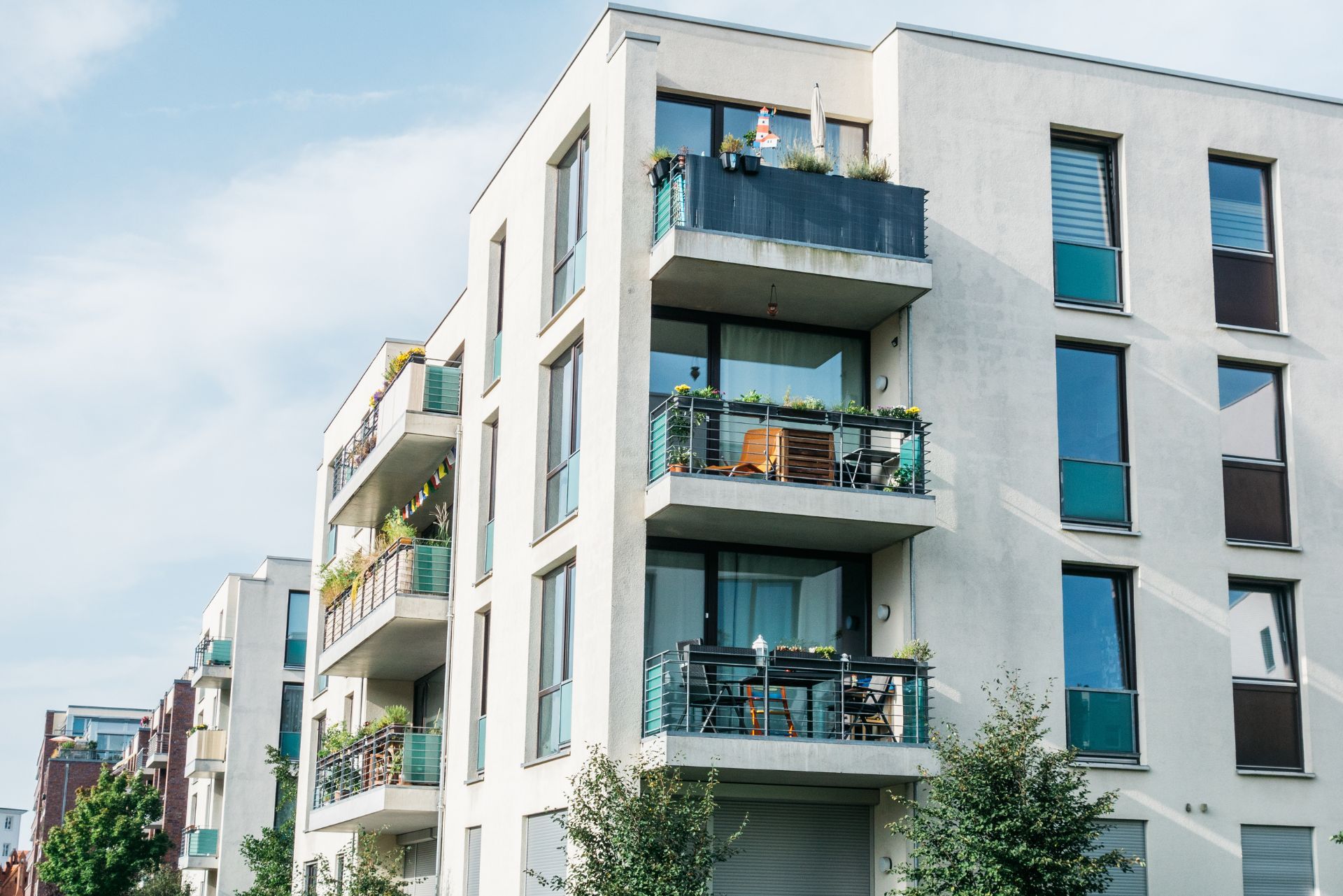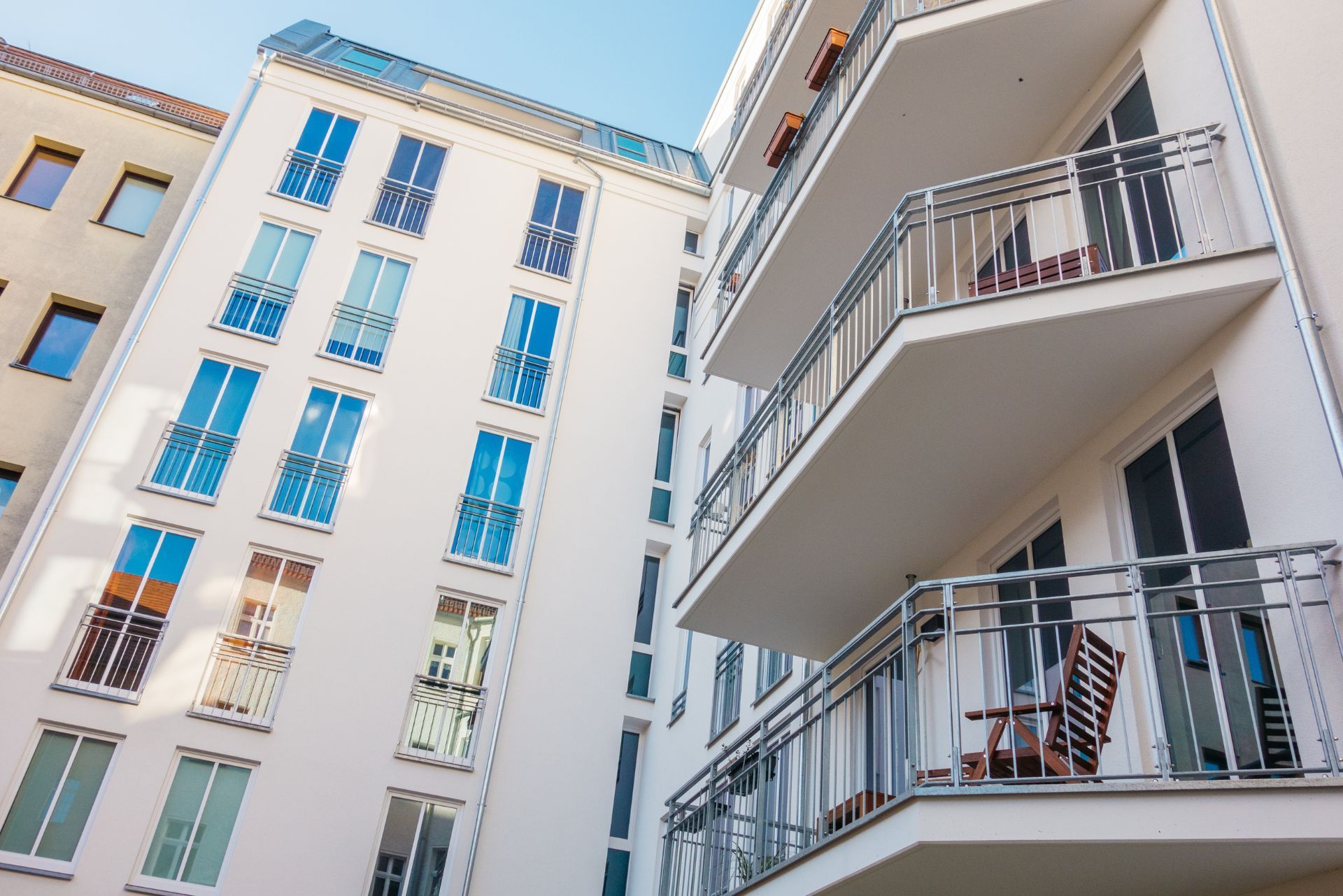Top 3 Recommended Policies

Investing in Class B multifamily apartments in Texas presents a unique set of opportunities and challenges, especially when it comes to managing insurance costs and risks. As one of the most dynamic real estate markets in the country, Texas has seen significant shifts in multifamily housing trends, occupancy rates, and construction activity. Understanding the nuances of insurance for Class B properties is crucial for property owners, investors, and managers aiming to protect their assets while optimizing operational costs.
This comprehensive guide delves into the current landscape of Texas Class B multifamily apartment insurance, exploring market trends, rising insurance premiums, risk factors, and strategies to navigate this evolving environment effectively. For a detailed overview of Houston’s multifamily market performance, including absorption rates and occupancy trends, the Colliers Q2 2025 Houston Multifamily Report offers valuable insights.
The Current State of Texas Class B Multifamily Apartments
Class B multifamily properties typically represent older buildings that are well-maintained but may lack the modern amenities found in Class A developments. In Texas, these properties constitute a significant portion of the multifamily inventory, especially in major cities like Houston and San Antonio. As of Q3 2023, approximately 40% of Houston’s multifamily market inventory falls into the Class B category, although these properties have been experiencing a decline in occupancy rates, indicating shifting tenant preferences and competitive pressures.
Meanwhile, San Antonio's multifamily market is witnessing robust construction activity, with 18,329 units under development as of Q3 2023. Notably, Class B projects make up 79% of this construction pipeline, signaling continued investor interest in this segment despite some occupancy challenges. This surge in development reflects a strategic focus on affordability and value-driven housing options, which remain in demand across Texas urban centers.
However, the market dynamics for Class B apartments differ markedly from Class A properties. For example, in Houston, Class A units accounted for nearly 80% of absorption in the second quarter of 2025, underscoring their dominant role in market performance. This divergence has important implications for insurance underwriting and risk assessment, as Class B properties may face distinct vulnerabilities related to age, maintenance, and tenant turnover.
In addition to the challenges posed by occupancy rates, Class B multifamily properties are also navigating a landscape of rising operational costs. Maintenance expenses, in particular, can be higher for older buildings, as owners must invest in repairs and upgrades to keep up with tenant expectations. This financial strain can lead to a delicate balancing act for property managers who must ensure that their offerings remain competitive while managing budgets effectively. Furthermore, the demand for energy-efficient and sustainable living spaces is pushing some Class B property owners to consider retrofitting their buildings with modern technologies, which can be both a costly and time-consuming endeavor.
Moreover, the demographic shifts in Texas are influencing the appeal of Class B apartments. With a growing population of young professionals and families seeking affordable housing options, these properties are often viewed as a viable alternative to pricier Class A units. The proximity of Class B apartments to urban amenities, schools, and public transportation makes them particularly attractive to renters who prioritize convenience and accessibility. As such, property owners are increasingly focusing on marketing strategies that highlight these advantages, aiming to attract a diverse tenant base that values both affordability and location.

Rising Insurance Costs and Their Impact on Class B Properties
One of the most pressing issues confronting Texas multifamily property owners is the sharp increase in property insurance premiums. According to a survey by the National Multifamily Housing Council, property insurance costs have surged by 26% over the past year, a trend that significantly affects the operating expenses of multifamily housing operators. This increase is largely driven by heightened climate risks, including severe weather events that are particularly relevant to Texas markets.
Class B properties often bear a disproportionate share of these rising costs due to their older construction and potentially higher susceptibility to damage. Insurers may view these buildings as higher risk, leading to more stringent underwriting standards and elevated premiums. Additionally, the overall insurance market has tightened, with many carriers reducing capacity or imposing stricter terms, further complicating coverage options for Class B apartment owners.
Given these challenges, it is essential for property managers and investors to proactively engage with insurance providers, explore risk mitigation strategies, and consider comprehensive coverage packages tailored to the specific needs of Class B assets. The Austin Apartment Association’s analysis provides an in-depth look at how climate-related risks are reshaping insurance landscapes for multifamily housing.
Moreover, the implications of rising insurance costs extend beyond just financial strain; they can also influence tenant retention and property attractiveness. As operating costs increase, property owners may feel compelled to raise rents, which could lead to higher turnover rates if tenants seek more affordable housing options. This dynamic creates a challenging environment for Class B properties, which often cater to a demographic that may be more sensitive to price changes. Additionally, the perception of risk associated with older buildings can deter potential renters, further complicating occupancy rates and revenue stability.
In response to these pressures, many property owners are turning to innovative solutions to manage risk and reduce insurance costs. This includes investing in property upgrades that enhance resilience against climate-related events, such as improved roofing, storm-resistant windows, and advanced drainage systems. By demonstrating a commitment to risk management and property improvement, owners may not only secure better insurance rates but also attract a more stable tenant base that values safety and sustainability. Collaborative efforts with local governments and community organizations to address broader environmental concerns can also play a pivotal role in creating a more favorable insurance landscape for multifamily properties in Texas.
Key Risk Factors Influencing Insurance for Class B Apartments
Insurance premiums and coverage terms are largely influenced by the risk profile of the property. For Class B multifamily apartments in Texas, several factors come into play:
- Building Age and Construction Quality: Older buildings may have outdated electrical, plumbing, and HVAC systems, increasing the likelihood of claims related to fire, water damage, or mechanical failures.
- Location and Exposure to Natural Hazards: Properties located in flood-prone or hurricane-affected areas face higher risks, which directly impact insurance costs and availability.
- Occupancy and Tenant Turnover: Higher turnover rates can lead to increased wear and tear, as well as potential liability exposures, influencing insurer risk assessments.
- Maintenance and Risk Mitigation Measures: Proactive maintenance, security systems, and disaster preparedness can mitigate risks and potentially lower insurance premiums.
Understanding these risk factors is vital for property owners to negotiate favorable insurance terms and implement effective loss prevention strategies. Moreover, as the multifamily market evolves, insurers are increasingly scrutinizing these elements to differentiate between higher and lower risk properties within the Class B segment.
In addition to the aforementioned factors, the economic environment plays a significant role in shaping insurance dynamics for Class B apartments. Economic downturns can lead to increased vacancy rates and reduced rental income, prompting insurers to assess the financial stability of property owners more closely. Properties in economically distressed areas may face higher premiums due to perceived risks associated with tenant defaults and increased crime rates, which can further complicate the insurance landscape.
Furthermore, the evolving regulatory landscape surrounding rental properties can introduce additional complexities. Changes in local laws regarding tenant rights, safety regulations, and building codes can impact insurance coverage requirements and liabilities. Property owners must stay informed about these developments to ensure compliance and to adjust their insurance policies accordingly, thereby safeguarding their investments against unforeseen legal and financial repercussions.
Market Trends Affecting Insurance and Property Performance
The Texas multifamily market is undergoing notable shifts that indirectly influence insurance considerations. For example, Houston’s multifamily market absorbed 5,521 units in Q2 2025, marking a 38.6% increase from the previous quarter and pushing overall occupancy to 89.0%. This growth is largely driven by Class A properties, which accounted for nearly 80% of absorption, but it also highlights competitive pressures on Class B assets to maintain occupancy and revenue streams.
Construction activity is another critical factor. While Houston saw a record-high delivery of 8,273 multifamily units in Q2 2023, San Antonio’s pipeline remains heavily weighted toward Class B developments. This influx of new inventory can impact rental rates and occupancy for existing Class B properties, affecting their financial stability and, consequently, insurance risk profiles.
Industry experts, such as John Sebree, Senior Vice President of Marcus & Millichap, note that a pullback in new construction can accelerate rent growth, potentially benefiting Class B properties by improving cash flow and reducing vacancy. However, this dynamic also requires careful risk management to balance growth opportunities against the increasing costs of insurance and maintenance.
Furthermore, the evolving demographics in Texas are playing a significant role in shaping the multifamily landscape. With a steady influx of young professionals and families moving to urban centers, demand for rental properties is expected to remain robust. This demographic shift not only influences the types of amenities and services that property owners must provide to attract tenants but also impacts insurance considerations, as properties with higher tenant satisfaction may experience lower turnover rates and fewer claims. Additionally, the rise of remote work has led to increased interest in suburban multifamily developments, further diversifying the market and creating new opportunities for property owners and insurers alike.
For a detailed quarterly market report on Texas multifamily construction trends, Partners Real Estate’s Q3 2023 report offers valuable data and analysis. This report not only highlights current statistics but also provides insights into future projections, helping stakeholders make informed decisions in an ever-changing market landscape.
Strategies for Managing Insurance Costs on Class B Properties
Given the rising insurance premiums and evolving risk environment, property owners and managers must adopt strategic approaches to control costs without compromising coverage quality. Some effective strategies include:
- Risk Assessment and Mitigation: Conduct thorough property inspections to identify vulnerabilities and invest in upgrades such as fire suppression systems, improved roofing, and flood defenses.
- Shopping the Market: Engage multiple insurance carriers and brokers to compare coverage options and negotiate better terms tailored to Class B property profiles.
- Bundling Policies: Consider combining property, liability, and other relevant insurance policies to leverage discounts and streamline risk management.
- Implementing Loss Control Programs: Training staff on safety protocols and maintaining detailed records can reduce claim frequency and severity.
- Leveraging Technology: Use data analytics and smart building technologies to monitor risks proactively and demonstrate risk reduction efforts to insurers.
By taking these steps, owners of Class B multifamily apartments in Texas can better navigate the insurance market’s challenges, protect their investments, and maintain profitability in a competitive landscape. Additionally, it is essential for property owners to stay informed about local regulations and market trends that can impact insurance rates. For instance, understanding the implications of new building codes or environmental regulations can help owners make informed decisions about necessary upgrades or modifications that may qualify them for lower premiums.
Furthermore, fostering strong relationships with insurance agents and brokers can provide valuable insights into emerging trends and potential discounts. Regular communication can ensure that property owners are aware of any new products or services that could enhance their coverage or reduce costs. Networking with other property owners to share experiences and strategies can also yield innovative ideas for managing insurance expenses effectively, creating a community of support and shared knowledge in the often complex world of property management.

The Future Outlook for Texas Class B Multifamily Insurance
The multifamily housing sector in Texas is at a pivotal juncture. Recent years have been atypical compared to historical trends, with significant fluctuations in construction, occupancy, and operating costs. The Austin Apartment Association’s State-of-the-Industry report emphasizes these shifts and their implications for property owners and investors.
Looking ahead, insurance for Class B multifamily apartments will likely remain a critical focus area. Climate change and natural disasters will continue to drive premium increases and coverage challenges, while market dynamics such as rent growth and construction activity will influence property valuations and risk profiles.
Stakeholders who stay informed about market trends, engage proactively with insurers, and invest in risk mitigation will be best positioned to thrive. As the Texas multifamily market evolves, so too must the strategies for managing insurance—balancing protection, cost, and operational efficiency to ensure long-term success.
For ongoing updates and expert perspectives on Texas multifamily housing, industry reports from firms like Institutional Property Advisors provide valuable insights into construction trends and market forecasts.
Moreover, the demographic shifts in Texas, particularly the influx of younger populations seeking affordable housing options, are reshaping the landscape of Class B multifamily properties. This demographic change is not just a statistical trend; it reflects a growing demand for amenities and services that cater to a more lifestyle-oriented tenant base. Property owners are increasingly focusing on enhancing community features, such as fitness centers, coworking spaces, and social gathering areas, to attract and retain tenants. This evolution in tenant expectations is also influencing insurance considerations, as properties that invest in these enhancements may face different risk profiles and insurance needs.
Additionally, the regulatory environment surrounding multifamily housing is becoming more complex, with local governments implementing new policies aimed at sustainability and tenant protections. These regulations can impact everything from construction practices to operational costs, thereby affecting insurance requirements. Property owners must navigate these changes carefully, ensuring compliance while also considering how they influence overall risk management strategies. Engaging with legal and insurance experts will be essential for adapting to this evolving landscape and ensuring that properties remain competitive and well-protected.
Contact Us


